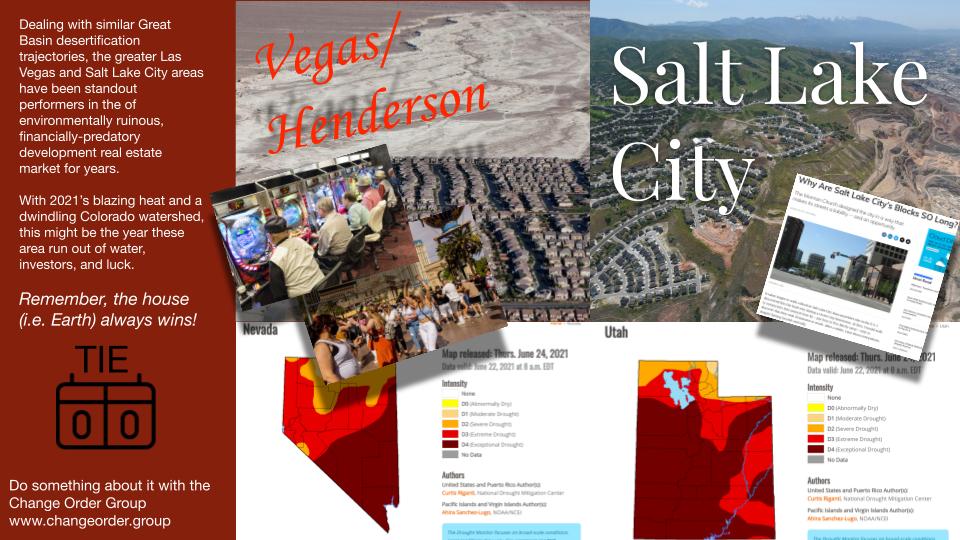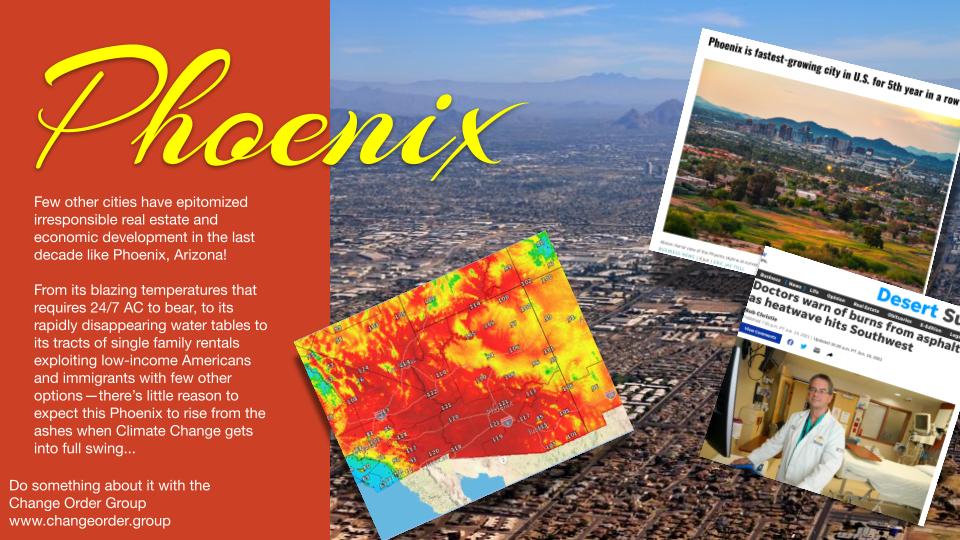A couple years ago I attended a “Future of Real Estate” conference in Miami, Florida. Given what I knew about South Florida in the context of climate change and rising seas, I thought the city an odd location to be discussing the future of real estate. In a rare spell of discretion, I sat through the conference listening, waiting, and hoping there would be serious conversations about climate change and resilience, since Miami is ground zero for American real estate related climate impacts.
The frank conversation about disappearing shorelines, saturated water-tables, affordability (Miami was long the country’s least affordable city), or any other tough conversation, never arrived.
It started dawning on me then–and has been affirmed by the last three years of development trends–that there’s a collective, willful ignorance in the Capital Market real estate development, investment, and underwriting industries about risks brought on by present and future climate, economic, and social threats. It’s too much to comprehend. And the towers and homes being built in South Florida are not proof of a climate plan, but of investor hubris and/or ignorance.

I was reminded of this ignorance and hubris glancing at Sidewalk Labs latest exercise in Utopianism and rendering agility. Having blown it in Toronto, Sidewalk is now proposing a master-planned city in the Wynwood neighborhood of Miami. This project should not happen: Miami has started an inexorable path to becoming uninhabitable due to extreme heat, fresh-water shortages, and rising seas. The whole concept is ridiculous and deserves to be ridiculed.
With discretion burnt away by last year’s heat and forest fires, I thought I’d make some educated guesses as to which cities are most likely to fail under climate impacts.
The list is not definitive. It’s not exhaustive in its research or even complete (Texas deserves its own post). The list does not necessarily reflect the views of my colleagues and I welcome the opportunity to research the topic with greater rigor. But considering many of these cities are already hitting record-setting temperatures in 2021, and those temperatures are following multi-decade trends and projections, I’m feeling good about my guesses.
I see the likelihood of the cities on this list being gutted by climate impacts as extremely likely.
Given that none of the listed metros have made appropriately aggressive climate plans to deal with their respective climatic and social threats (jobs, poverty, climate protection for disenfranchised populations, etc.), and given that these metros, on balance, are moving closer to climate annihilation (promoting sprawl, consumer-based economic development, relying on dirty power), I see little hope for any of them to sustain millions of people for much longer…a few decades at most, for most. Some less.
In the best-worst-case, millions will move from these metros to climate havens before pandemonium breaks out. In the worst-worst case, pandemonium will break out, millions will scramble for shelter, food, and water, rendering billions of dollars of new and old properties worthless, closing fields and factories, destroying neighborhoods, and leaving lots of dead bodies.
And then there’s the third option, which is reversing the impacts of unsustainable real estate, economic, and population growth. That’s what the Change Order Group is up to. We will help you understand the data and make an appropriate, science-based plans leading to different, preferable outcomes to resource depletion and regular mass extinction events.
If you’re a real estate stakeholder who wants to be be prepared, the Change Order Group wants to give you good options in a really bad situation. Drop us a line to find out how!
TOP FIVE METROS FOR ONGOING CLIMATE DISASTERS
5. Los Angeles

4. [Tie] Las Vegas/Henderson and Salt Lake City

3. Phoenix, Arizona

2. The Hamptons/Eastern Long Island

1. Miami/South Florida


Thank you for the post on American cities that climate change will drown in the future. Amazing!
LikeLiked by 1 person
There’s an implied but unjustified message of hope for those places. I figure I’d be the first to call it: these cities are hopeless and effectively don’t have much of a human future. Lizards and fish populations may thrive.
LikeLiked by 1 person
Yes. Lizards and fish, but not humans, will thrive in these cities unless we would force to cut carbon emissions to 1.5C.
LikeLiked by 1 person
The problem is we are paying for sins of decades ago. Reversing the dominos may be impossible at this point—though we need to do it (reverse climate impacts) anyway as net zero resource living will have to become SOP in the future.
LikeLiked by 1 person
Net zero should have started long ago, but at least now is good.
LikeLike
Depends where. In a certain way, it’s not terribly responsible to put many resources in areas that are unlikely to be around in 20-30 years. It’s really going to be a case-by-case thing to decide where’s a good place to invest or not.
LikeLiked by 1 person
[…] by my lack of surprise. Last year I wrote a post for my Startup Change Order Group blog titled “Top 5 major American cities being devastated by climate change.” Topping the list were Miami and South Florida, including West Coast cities like Tampa, […]
LikeLike